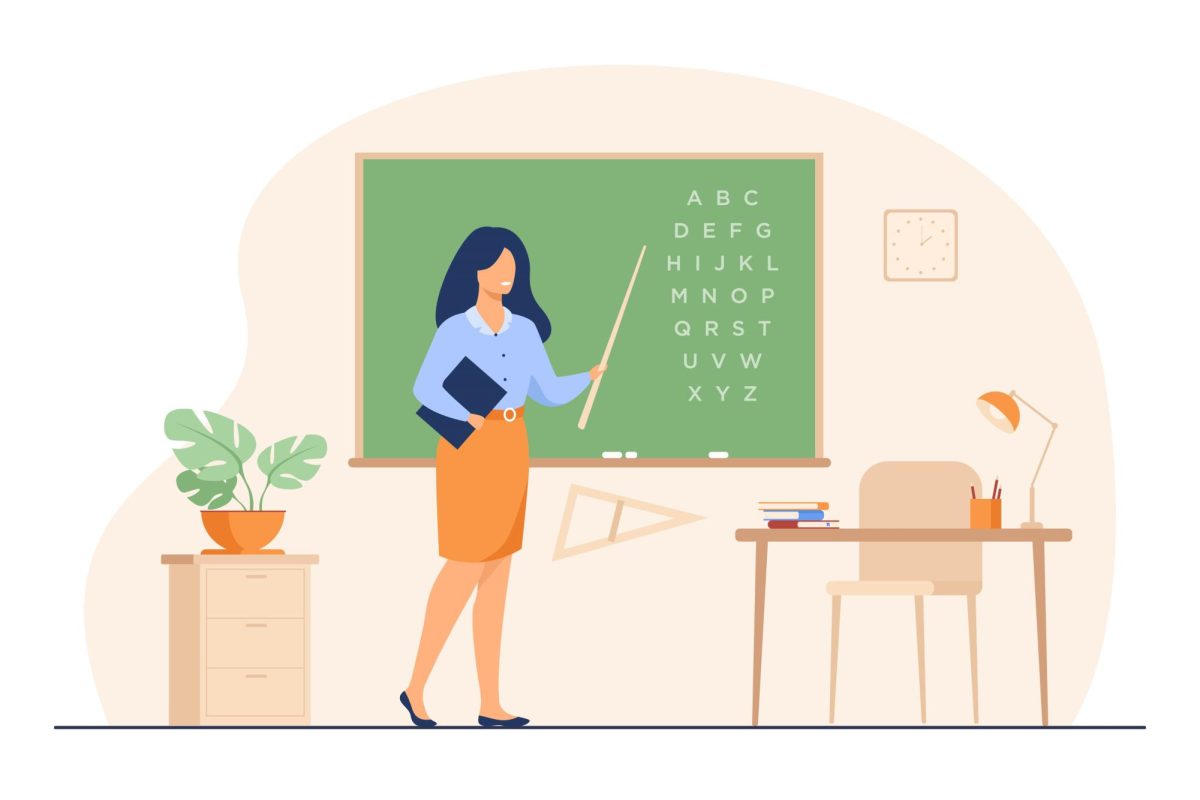
Dozens of bright white lights illuminate the classroom. Chromebooks positioned on every desk, a student staring at their screen. Testing day is here.
Standardized testing has been intertwined with the United States schooling system for decades. It gauges what a student does and does not know in every district, county and state. The state department of education may rename these standardized tests, with the newest high school graduation assessment being the NJGPA.
NJGPA stands for the New Jersey Graduation Proficiency Assessment and is the newest version of the state graduation test. Starting with the 2023-2024 school year, all high school juniors within New Jersey must pass the NJGPA, or face the possibility of not graduating with their classmates.
The test is divided into two subjects, Math and ELA. Math has a total of three sections over two units, consisting of multiple-choice and short-response questions. ELA comprises two sections over two units including multiple choice and essays based on passages. Each subject has 180 minutes of testing time for a total of 360 minutes, or six hours of testing.
For juniors at Audubon High School, the daunting task was completed over two days: March 12 and 13, 2024. The Media Center, C110, C11, C009 and the ShopRite Lab were designated testing locations. Some students were placed inside classrooms with about 15 others, while the rest of the juniors were assigned the Media Center with dozens of students for the NJGPA. Students’ seats were preassigned, a white piece of paper with a username and password for TestNav. Every backpack had to be against the wall; a water bottle, book and mathematical calculator were allowed. A five-minute break was given between units if possible, longer if the time frame allowed. For three hours each day, juniors sat in the same classroom, the first day on Math, the second day on ELA. After two days, students were returned to their normal school schedules.
The score you received for your NJGPA is based on how many questions you answered correctly, how many topics you comprehend. To do well while completing a standardized test, you have to remain level-headed and calm on every question, even if you don’t know the answer. For a student with test anxiety, it could be an overwhelming task.
Test anxiety is defined as a heightened level of cortisol and anticipation before taking a test that increases your anxiety and stress. Up to 40% of students nationwide suffer from it. It can cause anxiety attacks, loss of focus and the inability to perform normally during a test, crashing results. One of the major factors in the severity of a student’s test anxiety is the room environment. Logistically, placing a large number of students in one room is a good way to limit the disruption of a normal school day for other students. For students with test anxiety, a large testing area negatively impacts their results, with test anxiety having a larger effect in that environment. Students tend to feel more stressed and have negative self-judgment when surrounded by other testers who have completed the test before them or received a higher score. Unfamiliar test proctors and uncomfortable chairs and temperatures can also drop a student’s performance on a standardized test. The point of the NJPGA is to accurately judge if a student is ready for high school graduation. Students with test anxiety are not guaranteed this accuracy, especially when a single factor can crash their results.
Standardized testing was based on the concept that a student’s knowledge can be determined by the same method. Reality does not match the ideal. A student can and will perform poorly from the room conditions, anxiety and numerous other factors. Standardized testing has periodically changed to improve its assessment of a student’s knowledge, but it always falls short in providing a comfortable environment for the student. The test will never be accurate if it causes a student to panic the moment they enter the classroom. To gauge knowledge, you need the environment to let it thrive. For many, standardized testing does not offer that environment.
So, you have just received your NJGPA score and unfortunately, you failed. The good news, it doesn’t necessarily mean you won’t graduate with your class. The PSAT, SAT and ASVAB can all replace the score needed to meet graduation requirements. If standardized testing doesn’t match the standard, a portfolio is required for you to graduate. The portfolio contains several components tested in the NJGPA, with its own assessment to prove the student’s readiness for graduation. The Language Art side is handled by Mrs. Wilson, who has previously held portfolio classes for students. The lessons focus on the different subjects that are reviewed in NJGPA, including narrative and literary analysis of fiction and nonfiction pieces. The students are being prepared for the portfolio assessment, the replacement for the failing NJGPA score. In terms of material and question format, the two tests are very similar. The main difference for students is that the portfolio assessment offers a more guided path compared to the NJGPA and is usually created by the portfolio teacher. It only takes about a month to complete a student portfolio, with Audubon High School finishing theirs by early April this year.
The main goal for a high school junior is to not wind up in a position that requires them to complete a portfolio, though it can still happen. Whether you see the purpose in taking the NJGPA to prove your knowledge, it still holds the same purpose as its older versions. It tries to gauge a student’s knowledge as accurately as possible to set regional, state and national educational standards. The test still needs some improvements, but it remains the most used method to glimpse into what a student truly comprehends.


























Miss Little • May 9, 2024 at 11:52 am
Great article Ashley!